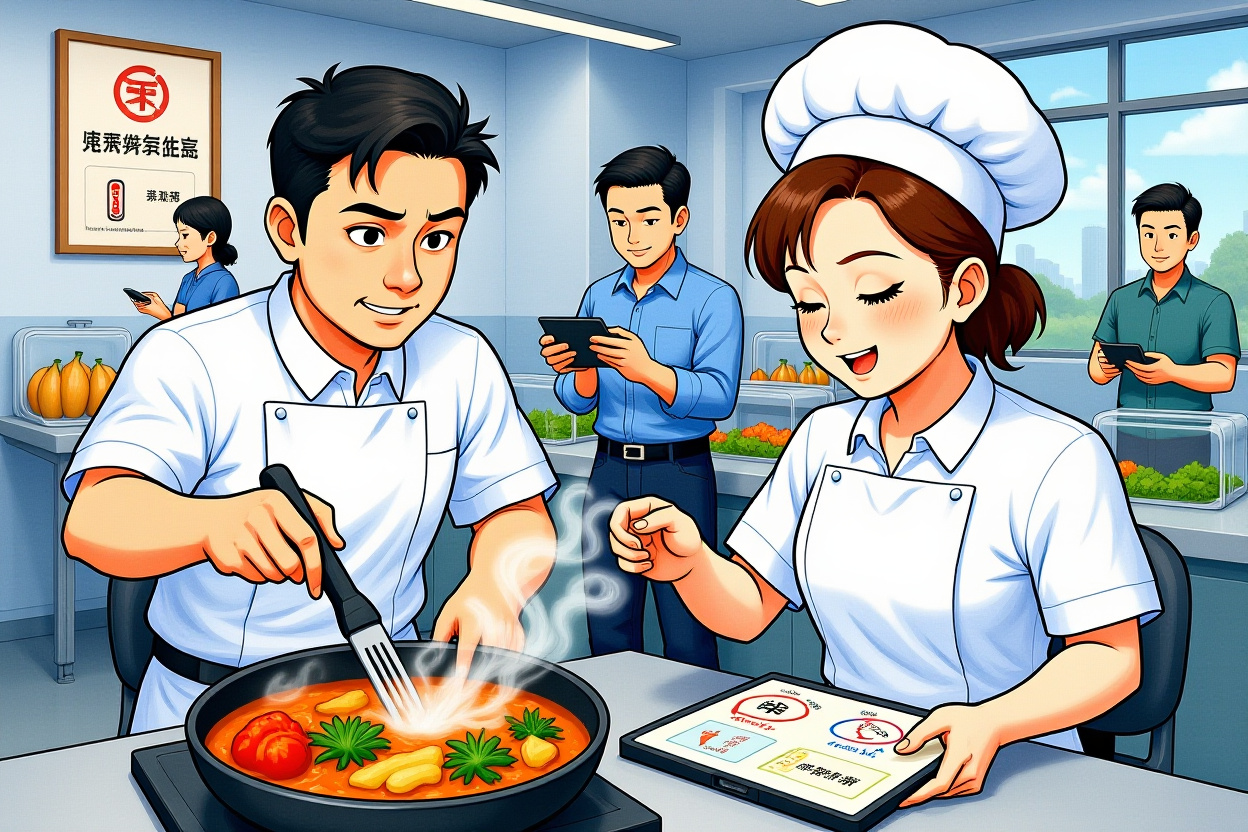The Regulatory Definition of Pre-made Dishes
In 2024, China’s State Administration for Market Regulation, along with five other ministries, issued a landmark notification that officially defined pre-made dishes for the first time at the national level. The notification provides clear parameters around ingredients, processing methods, storage requirements, and consumption methods.
According to the official definition, pre-made dishes refer to pre-packaged food products made from one or more agricultural products, with or without seasonings, and without preservatives. These products undergo industrial pre-processing such as stirring, marinating, rolling, forming, frying, baking, boiling, or steaming. They must be heated or cooked before consumption and comply with labeled storage and transportation conditions.
What’s Excluded from the Official Definition
The regulatory clarification specifically excludes several categories from the pre-made dishes definition:
– Central kitchen products from chain restaurants
– Fresh-cut vegetables that undergo only washing, peeling, or cutting
– Staple foods like frozen rice products, instant noodles, boxed meals, and baked goods
This distinction creates a significant gap between regulatory understanding and consumer perception of pre-made dishes.
Central Kitchen Operations in Chain Restaurants
Chain restaurants like Xi Bei (西贝) utilize central kitchen models that differ substantially from consumer conceptions of pre-made dishes. These facilities represent a sophisticated approach to quality control and standardization in the food service industry.
Definition and Requirements for Central Kitchens
According to China’s Food Business License and Filing Management Measures, central kitchens are defined as independent facilities established by food service enterprises that concentrate the processing of finished or semi-finished food products for distribution to their chain stores.
These facilities must meet stringent requirements regarding:
– Location selection and layout planning
– Construction materials for floors, walls, and ceilings
– Equipment specifications
– Personnel management and training protocols
Central kitchens serve as critical components in the food safety chain from source to table, ensuring quality and efficiency throughout the operation.
Core Functions of Central Kitchens
Central kitchens perform several essential functions that distinguish them from conventional pre-made dish operations:
– Standardization and consistency: Through uniform recipes, processes, and equipment, central kitchens ensure identical raw materials and semi-finished products across all locations
– Quality assurance: Professional environments and equipment enable stronger control over quality and safety, including centralized ingredient inspection and procurement
– Efficiency improvement: Economies of scale through concentrated production significantly enhance operational efficiency
– Innovation enablement: Central kitchens serve as research and development centers for new menu items
Key Differences Between Central Kitchen Products and Pre-made Dishes
The distinction between central kitchen operations and consumer perceptions of pre-made dishes represents a crucial understanding gap in China’s food industry.
Central kitchens primarily produce standardized semi-finished products or heat-and-serve finished dishes that undergo basic preprocessing. These products then require final cooking steps at restaurant locations, where chefs perform essential techniques like stir-frying, simmering, or roasting.
This final cooking phase generates the wok hei (breath of the wok) and fresh-from-the-kitchen texture that consumers associate with authentic restaurant dining. Additionally, restaurant chefs can adjust dishes according to customer preferences for spiciness, saltiness, or other taste elements.
Other distinguishing factors include:
– Higher product turnover rates
– Shorter shelf life
– Specific food safety and quality assurance requirements
Common central kitchen products include marinated chicken dices, cut potato strips, packaged hot pot bases, and portioned stew seasoning packs—all requiring final preparation at restaurant locations.
Communication Strategies for Food Businesses
Transparency represents the cornerstone of effective communication between food businesses and consumers regarding pre-made dishes. Eliminating information asymmetry and building trust requires proactive approaches.
Recommended strategies include:
– Strengthening food safety management systems
– Conducting regular employee training
– Implementing open kitchen concepts
– Voluntarily disclosing ingredient sourcing and processing information
These approaches help consumers understand which processes occur in central kitchens and which happen onsite, addressing misconceptions and concerns about pre-made dishes.
Current Status of Pre-made Dish National Standards
The National Health Commission is leading development of national standards for pre-made dishes, with draft standards expected to undergo public consultation shortly. Industry associations like the China Chain Store and Franchise Association continue to collaborate with government departments to research and improve industry standards.
Key focus areas include:
– Clear labeling requirements for pre-made dishes in food service
– Operational guidelines to reduce conceptual ambiguity
– Standards that both businesses and consumers can reference
These efforts aim to create clearer frameworks that benefit all stakeholders in the food ecosystem.
Public Education and Awareness Initiatives
Addressing the understanding gap around pre-made dishes requires comprehensive public education efforts. Industry associations, research institutions, media organizations, and leading companies are exploring collaborative approaches to consumer education.
Key initiatives include:
– Explaining the safety and nutritional aspects of modern food processing technologies
– Highlighting the advantages of central kitchen models in ensuring food safety consistency
– Encouraging transparent communication about which processes occur centrally versus onsite
These efforts aim to eliminate misunderstandings and concerns arising from information asymmetry while promoting scientific understanding of food production methods.
Collaborative Approaches for Industry Development
Building a transparent, mutually trusting, diverse, and healthy food ecosystem requires coordinated efforts across multiple stakeholders.
Food businesses should focus on:
– Maintaining honest operations
– Proactively disclosing information
– Providing high-quality products and services
– Strengthening trust foundations
Industry organizations must:
– Establish communication platforms
– Improve standard systems
– Enhance industry self-regulation
– Promote healthy industry development
Government regulators need to:
– Perfect laws and regulations
– Strengthen market supervision
– Provide protection for fair competition and consumer rights
Consumers should:
– Develop scientific understanding gradually
– Exercise supervision rights rationally
– Use consumption choices to drive market progress
Only through collaborative efforts can China develop a food market environment where consumers feel secure and operators experience sustainable growth.
The understanding gap around pre-made dishes represents both a challenge and opportunity for China’s food industry. By addressing misconceptions through transparent communication, standardized regulations, and collaborative stakeholder engagement, the industry can build greater consumer trust while maintaining efficiency and quality standards that benefit all participants in the food ecosystem.
As standards evolve and communication improves, consumers will increasingly recognize the distinctions between different food preparation methods, making informed choices that shape market development. The journey toward greater understanding and transparency continues, with each stakeholder playing a vital role in creating a healthier, more trustworthy food environment for all.




